- Home
- Lin Carter
H.P.Lovecraft: A Look Behind Cthulhu Mythos Page 2
H.P.Lovecraft: A Look Behind Cthulhu Mythos Read online
Page 2
Indeed, a recent index to the Mythos, compiled and published by Robert Weinberg of Hillside, New Jersey, in 1969, titled A Reader’s Guide to the Cthulhu Mythos, lists a total of ninety stories, including full-length novels, as belonging to the Mythos. (I disagree with Mr. Weinberg’s judgment in many cases; my own index to the complete Mythos to date will be found at the back of this book, as an appendix.)
What is the power—the fascination—which the Cthulhu Mythos exerts over an ever-expanding readership? Why has it gripped the attention of many thousands of readers, and why does it continue to do so three and a half decades after the demise of its founder?
It has fascinated me since my teens. I cannot help but feel that many of Lovecraft’s contemporaries were far superior writers—Clark Ashton Smith, A. Merritt —and certainly many of them have won even more gigantic followings— Edgar Rice Burroughs, perhaps Robert E. Howard —but it is Lovecraft alone who has achieved the international popularity and the critical acclaim. Why?
Howard’s success, and the popularity of his own school of “Sword & Sorcery” may be, probably are, transient phenomena. But Lovecraft’s ever-widening fame has never faltered and continues to grow. How?
The answer may perhaps be discovered in this book.
At least, to find that answer, this book was written.
Lin Carter
Hollis, Long Island, New York
March-August, 1971.
***
1* Such as William Burroughs, Samuel Beckett, and Alain Robbe-Grillet.
2* Excluding the novel The Lurker at the Threshold, which contains fragmentary passages found among Lovecraft’s papers consisting of about twelve hundred words and which Derleth skillfully wove into the fabric of that novel, most of these so-called “collaborations” have been almost wholly the work of August Derleth, although based on story ideas left undeveloped in Lovecraft’s notebooks. This will be gone into in greater detail further on in this book.
1. The Visitor from Outside
To begin at the beginning: Howard Phillips Lovecraft was the only child of Winfield Scott Lovecraft and Sarah Susan (Phillips) Lovecraft.
Lovecraft was born on August 20, 1890, at 194 Angell Street, Providence, Rhode Island. This was the home of Mrs. Lovecraft’s family; H.P.L.’s parents actually resided in Dorchester, Massachusetts, at this time.
To place Lovecraft’s birth in perspective, I might mention that at this date A. Merritt was a six-year-old boy living in Beverly, New Jersey, and Edgar Rice Burroughs was a youth of fifteen, then having the time of his life on a ranch in Idaho. Some two years after this, J. R. R. Tolkien would be born in Bloemfontein, South Africa, and the year following, Clark Ashton Smith would be born in California.
Lovecraft was of predominantly British stock on both sides of his family. His father was the son of an Englishman who had lost his fortune and emigrated from Devonshire to New York in 1847 and married a girl of British descent -an Allgood from Northumberland, descended from a former British officer who remained in the United States after what Lovecraft himself, ardent Anglophile that he was, would term “the disastrous Revolution.” On his mother’s side, Lovecraft was, in his own words, “a complete New-England Yankee, coming from Phillipses, Places, & Rathbones.”
H.P.L.’s mother came of genteel, rather cultured’ stock. In his excellent biographical monograph, H.P.L.: A Memoir (1945), August Derleth described her father as “a man of modest means and a voluminous library, which often harbored the young Lovecraft”
We may assume that Lovecraft’s father was from ; somewhat lower level of the social strata. His profession, at least, was rather inelegant. He was a traveling salesman.
The boy did not have a particularly happy or whole, some or even a very normal childhood. His father was seriously ill—he was, in fact, a paretic—and whet Lovecraft was only a child of three years, his father’s illness had advanced to a point at which he was no considered competent to handle his own affairs, and ht was committed to the care of a legal guardian. Winfield Scott Lovecraft grew progressively worse, steadily more abnormal in his behavior, and died five years later in 1898, leaving the eight-year-old boy fatherless.
As for Lovecraft’s mother, she appears to have been one of those grasping creatures who smother their sons with ultra-protectiveness. Derleth says: “Sarah Phillip Lovecraft was a psychoneurotic, determined to sheltei her son from the rigors and dangers of life.” For the rest of his life, Lovecraft showed the marks of this living like a sickly semi-invalid, avoiding the everyday world around him.
Lovecraft spent his infancy in Aubumdale, Massachusetts, where the family came to live in the home of a minor poetess, a friend of Lovecraft’s mother, named Louise Imogen Guiney. In 1915, Lovecraft recalled this period in an autobiographical document (written at the request of his friend and fellow-membet of the United Amateur Press Association, Maurice Moe of Milwaukee): “It is around the life in Auburndale that my earliest recollections centre. The Guiney House with its tower chamber, and the huge St. Bernard dogs which the authoress used to keep about the place, are distinct memories of a two-year-old. We there [get the aged Dr. Oliver Wendell Holmes shortly before his death, though I admit having no independent remembrance of seeing him.”
As a boy, Lovecraft was sickly, sensitive, bookish, preferring the society of adults to that of other children. And he was precocious to a fault. “I had learned the alphabet at two, and at four could read with ease, though making the most absurd errors in the pronunciation of the long words I loved so well.”
Having learned to read so young, he naturally turned to writing. He wrote a lot of very mediocre verse, and some early short stories survive, the earliest being The Beast in the Cave (written in 1905) and The Alchemist (1908). Of course, these stories reveal the marks of the amateur in every line, but they are a fair indication of things to come. Regrettably, he did not pursue this direction any further for some years; in fact, he abandoned fiction entirely. A letter dated March 7, 1920, discusses this period: “I dropped fiction in the nine years between 1908 and 1917. Somehow or other, I conceived the idea that my stories were poorer even than my verse and essays,” he wrote to his friend, Reinhardt Kleiner.
Elsewhere, speaking of his grade school and high school years, Lovecraft wrote: “Most of my incessant, voluminous writing was scientific and classical, weird material taking a relatively minor place.” A juvenile enthusiasm for astronomy led him to the publishing of a hectographed periodical called The Rhode Island Journal of Astronomy; by the time he was sixteen he was writing a monthly column on current developments in astronomy for the Providence Tribune.
Lovecraft’s health as a boy did not allow him to continue on to college. He lived at home, increasingly under the maternal influence not only of his mother, but of fondly doting female relatives (his aunts, Mrs, Franklin C. Clark and Mrs. Edward F. Gamwell, the latter of whom was to survive him). Then, in 1914, his interest in such amateur publishing ventures as the Journal of Astronomy led him to the United Amateur Press Association, a band of kindred literary souls among whom he found his earliest and firmest friends. Publishing his own amateur magazine, The Conservative, and contributing (under a variety of pseudonyms) to the magazines printed by his new friends, whetted his writing interest and experience. He contributed reams of verse, brief articles, and his first few stories to these non-paying markets. It was to be some years before Lovecraft’s writing earned him his first dollar, and in many ways, throughout his brief career, he remained very much the amateur writer, the dilettante, the dabbler—although a dabbler whose strange, darkling talents bordered on a kind of genius.
It is not my intention to write a biography of H. P. Lovecraft. I have no talent for biography, and my; interest in Lovecraft’s life and personality is secondary to my interest in his writings. There are others more suited to the task than I, and I gladly leave it to them.1*
But the sources of the Cthulhu Mythos lie in Lovecraft’s earliest experiences. Some of the names and my
sterious symbols that were later incorporated into the Mythos date far back into his childhood, even, in some cases, to his infancy. Thus some cursory biographical treatment is required at the opening of my explorations.
Perhaps the first germ of the Mythos can be dated to 1895. Years later, Lovecraft recalled it in a letter to Frank Belknap Long, dated January 26, 1921. Discussing his story The Nameless City (which, as we shall see, was the first story ever written in the Mythos), Lovecraft wrote: “At the risk of boring you will enclose my latest—just finished and typed—The Nameless City. This had its basis in a dream, which in turn was probably caused by contemplation of the peculiar suggestiveness of a phrase in Dunsany’s Book of Wonder —“the unreverberate blackness of the abyss." The character of the ‘mad Arab Alhazred’ is fictitious. The lines are mine2* —written especially for this story—and Abdul Alhazred is a pseudonym I took when I was about five years old and crazy about the Arabian Nights."
Elsewhere, he expands a bit on this item of information. Amidst a long, chatty letter, written on February 3, 1924, to Edwin Baird, first editor of Weird Tales, Lovecraft tells: “By the time I was five… I favoured the Arabian Nights… I formed a juvenile collection of Oriental pottery and objects d’art, announcing myself as a devout Mohammedan and assuming the pseudonym of ‘Abdul Alhazred’—which you will recognise as the author of that mythical Necronomicon which I drag into various of my tales.”
Yet another germ appeared the following year. Those weird winged beings called “night-gaunts,” who first made their debut in Lovecraft’s fiction in the pages of his abortive “Dunsanian period” novella, The Dream-Quest of Unknown Kadath (1926),3* derive from his childhood nightmares. “In January, 1896,” he wrote top Maurice W. Moe, in the same autobiographical document alluded to above, “the death of my grandmother plunged me into a gloom from which it never fully recovered… I began to have nightmares of the most hideous description, peopled with things which I called ‘night-gaunts’—a compound word of my own coinage,’’ Lovecraft was only a child of six at this time.
Quite a bit of Lovecraft’s juvenile writings have been preserved, and from a study of these early tales, as from the contents of his Selected Letters,4* a fairly adequate picture of how the Cthulhu Mythos evolved can be pieced together. In certain areas of this study I will be covering data not previously available to earlier Lovecraftian scholars, and I will correct errors or inaccurate assumptions in those writers from time to time. The letter quoted above, which alludes to the invention of the name “Abdul Alhazred,” is a case in point. One researcher pointed out, in an article published before the first volume of the Selected Letters saw print in 1965, that among the several old lines in Lovecraft’s ancestry is the Hazard family; thus “Alhazred” might be a self-imposed pun of sorts. But Lovecraft makes no mention 0f this; the genesis of the name may have escaped his recollection.
After writing a short tale called The Alchemist, Lovecraft put aside fiction and turned to verse. For the next nine years, he tells us, he wrote no more stories. It is interesting to contemplate what levels his fiction might have reached if he had only followed through on the head start his precocity had given him; unfortunately, he did not.
Lovecraft’s verse need not concern us here. For the most part it had nothing at all to do with the themes later developed in his fiction 5* and the bulk of his early verse, at least, consisted of excruciating imitations of the worse sort of poetry (to my taste, anyway); that is, the polished, elegant “occasional” verse written by 18th Century gentlemen. A sample followeth here:
On Receiving a Picture of Swans
With pensive grace, the melancholy Swan
Mourns o’er the tomb of luckless Phaethon;
On grassy banks the weeping poplars wave,
And guard with tender care the wat’ry grave.
Would that I might, should I too proudly claim
An Heav’nly parent, or a God-like fame;
When flown too high, and dash’d to depths below,
Receive such tribute as a Cygnus’ woe!
The faithful bird, that dumbly floats along,
Sighs all the deeper for his want of song.
Lovecraft wrote that when he was twenty-five.
It is much to his credit that Lovecraft seems not to have taken himself very seriously as a poet. (I may, however, be reading too much into the typical “modesty” affected by most authors, whether sincere or not.) At least, he was nothing if not candid about; such effusions as the swan-lyric above. Discussing the poem, and his favorite sort of poetry in general, he wrote to Kleiner: “Impromptu verse, or ‘poetry’ to order, is easy only when approached in the cooly prosaic spirit. Given something to say, a metrical mechanic like myself can easily hammer the matter into technically correct verse, substituting formal poetic diction for real inspiration or thought. For instance, I lately re. I ceived a post-card bearing the picture of swans on a-placid stream. Desiring to reply in appropriate verse, I I harked back to the classic myth of Phaethon and! Cygnus, handling it as follows: (here he quoted the! poem I have just given, concluding)—“This required; about 10 minutes for composition.”
At the age of twenty-seven Lovecraft returned to his experiments with fiction. He was now living at 598 Angell Street in Providence, Rhode Island, which would remain his address for many years.
His approach to writing was shadowed by his fondness for certain writers. I do not feel that Lovecraft was intrinsically an original writer; he seems basically eclectic (a polite euphemism for “imitative”), i.e., intensely enthusiastic over a few favorite story-tellers that he permitted this enthusiasm to stampede him headlong into derivative efforts of his own along similar lines.
Of course, eclecticism is not always a destructive trait in a writer, providing the writer has the good sense, or the ability, or both, to absorb his models, transmute them into new material, and use his sources, rather than merely to continue copying them. Both A. Merritt and Edgar Rice Burroughs fell under the influence of the great H. Rider Haggard and picked up the “lost race” romance from the point at which Haggars had left it. Both, however, transmuted their original enthusiasm for Haggard into very original and personal creations. In fact, most writers begin as eclectics. That is, it is very frequently a young reader’s enormous enthusiasm over a writer or writers which provides the original stimulus for the lifelong process of turning himself into a writer. This would seem to be the case with Lovecraft.
“Regarding early reading,” he wrote to Kleiner in a letter dated January 20, 1916, “when I was about twelve I became greatly interested in science, specialising 6* in geography (later to be displaced by astronomy), being a Verne enthusiast. In those days I used to write fiction, and many of my tales showed the literary influence of the immortal Jules. I wrote one story about that side of the moon which is forever turned away from us—using, for fictional purposes—the Hausen theory that air and water still exist there as the result of an abnormal centre of gravity in the moon. I hardly need add that the theory is really exploded—I even was aware of that fact at the time—but I desired to compose a ‘thriller’… When I write stories today Edgar Allan Poe is my model.”
Elsewhere, on the same subject, he reiterated: “I used to write detective stories very often, the works of A. Conan Doyle being my model so far as plot was concerned. But Poe was my God of Fiction. I used to love the horrible and the grotesque—much more than I do now—and can recall tales of murderers, spirits, reincarnations, metempsychoses, and every shudder-producing device known to literature!”
The earliest of Lovecraft’s tales demonstrate not only I this fondness for the uncanny and the macabre, but also the slavish imitating of Poe. The point has been much argued in articles pro and contra Lovecraft's work, but actually the resemblances between the two writers are several and are other than merely coinciental. Poe perfected a style of the short story and wrote most of his prose in briefer lengths; so did Lovecraft. Poe’s only sizable attempt at a novel, The Na
rrative of Arthur Gordon Pym, was abandoned; as shall see, Lovecraft felt uneasy in the novel form and I never wrote anything longer than about thirty thousand words. Lovecraft’s diction is closely similar to that of Poe’s, but this may have been partly an accidental result of H.P.L.’s affecting 18th century prose! style. Of course, both wrote horror stories.
1917, the year of Lovecraft’s return to fiction, proved interesting if not remarkably productive. He composed a brief, very Poe-esque tale, The Tomb, followed by Dagon, an excellent short story about a sailor who escapes from German capture in a small boat and comes aground on an island of black mud or slime which is covered with the reeking carcasses of decaying fish. He conjectures that the island had been long underwater, that “through some unprecedented volcanic upheaval, a portion of the ocean floor must have, been thrown to the surface, exposing regions which for innumerable millions of years had lain hidden under unfathomable watery depths.” He discovers a carven monolith, hieroglyphic inscriptions in an unknown system, and titanic bas-reliefs of repellent horror.
It is an interesting prefiguring of themes later toB emerge in his Cthulhu stories. The volcanic upheaval| that temporarily exposes long-drowned horrors above; the waves, for example, reappears in The Call ol Cthulhu (1926); Dagon himself, the Philistine sea-god later became one of the minor godlings of the Lovecraftian pantheon.
The next year, Lovecraft wrote Polaris, the first of “Dreamlands” fantasies, and properly the beginning of what we call his “Dunsanian period.”7* This tale is languorous, dreamy, and melancholy, written in an affected poetic diction, yet not without considerable charm. It is the only one of his tales laid in the imaginary prehistoric polar kingdom of Lomar, which he frequently mentions in the later Cthulhuoid stories.
Lovecraft had not quite completely absorbed these early influences by 1919.

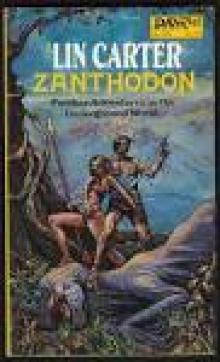 Zanthodon
Zanthodon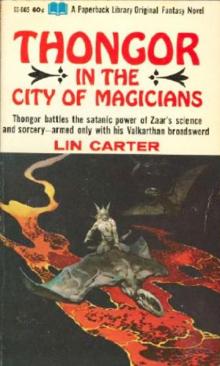 Thongor in the City of Magicians
Thongor in the City of Magicians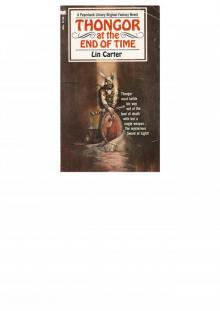 Thongor at the End of Time
Thongor at the End of Time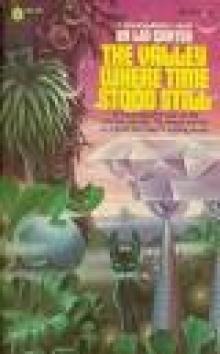 The Valley Where Time Stood Still
The Valley Where Time Stood Still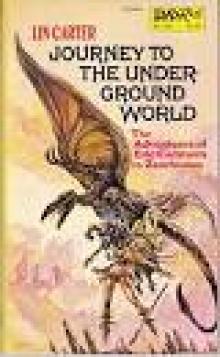 Journey To The Underground World
Journey To The Underground World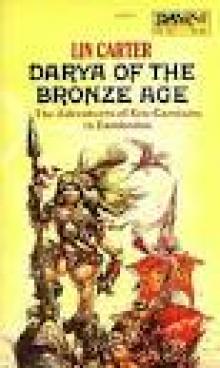 Darya of The Bronze Age
Darya of The Bronze Age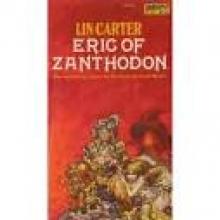 Eric of Zanthodon
Eric of Zanthodon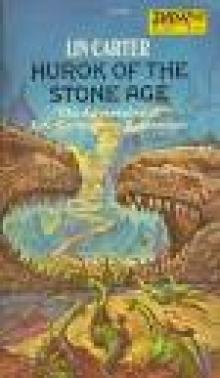 Hurok Of The Stone Age
Hurok Of The Stone Age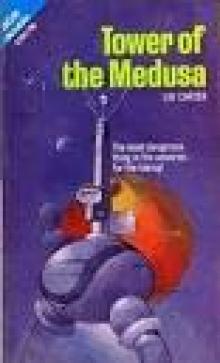 Tower Of The Medusa
Tower Of The Medusa Thongor Fights the Pirates of Tarakus
Thongor Fights the Pirates of Tarakus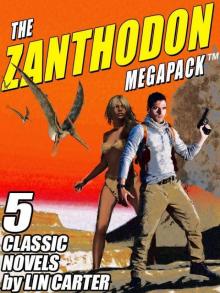 The Zanthodon MEGAPACK ™: The Complete 5-Book Series
The Zanthodon MEGAPACK ™: The Complete 5-Book Series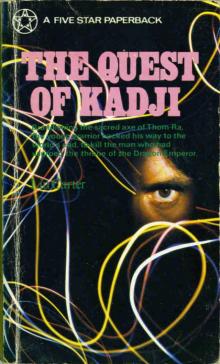 The Quest of Kadji
The Quest of Kadji Lin Carter - The Man Who Loved Mars
Lin Carter - The Man Who Loved Mars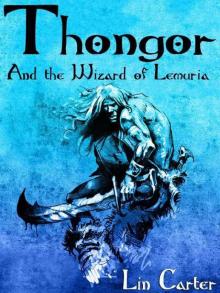 Thongor and the Wizard of Lemuria
Thongor and the Wizard of Lemuria The Nemesis of Evil
The Nemesis of Evil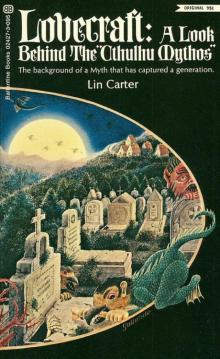 H.P.Lovecraft: A Look Behind Cthulhu Mythos
H.P.Lovecraft: A Look Behind Cthulhu Mythos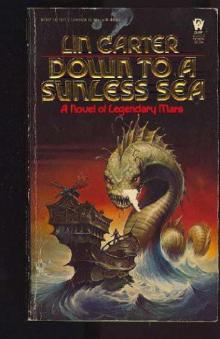 Lin Carter - Down to a Sunless Sea
Lin Carter - Down to a Sunless Sea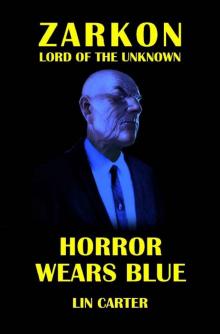 Horror Wears Blue
Horror Wears Blue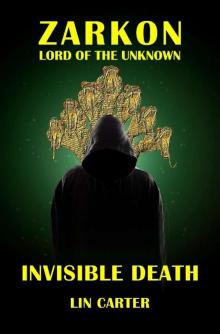 Invisible Death
Invisible Death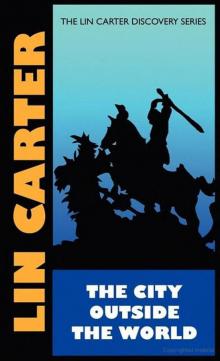 Lin Carter - The City Outside the World
Lin Carter - The City Outside the World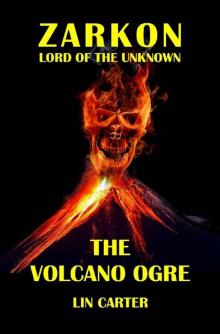 The Volcano Ogre
The Volcano Ogre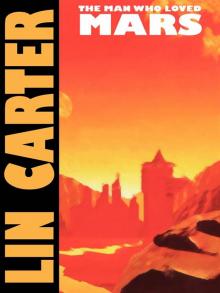 The Man Who Loved Mars
The Man Who Loved Mars